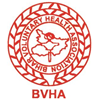Saniya Kumari’s Journey to Menstrual Hygiene Advocacy
In the remote village of Raghuta, situated at the Indo-Nepal border area of Raxaul Block in West Champaran District, Bihar, lived a determined young girl named Saniya Kumari. At the age of 17, she had grown up with primitive thinking and limited awareness, especially when it came to menstrual hygiene.
Saniya’s father, Chandan Kumar, earned a living by carrying passengers and goods in his horse cart (Tanga) through the streets of Raxaul town. Her family adhered to orthodox beliefs, and they were unaware of the importance of menstrual hygiene. The women in the family, including her mother Lilavati Devi and aunt, used shabby pieces of cloth during menstruation, following traditional practices prevalent in their community.
In her village, the lack of knowledge about menstrual hygiene was a silent topic that no one discussed openly. Even basic practices like taking a daily bath during menstruation were considered inauspicious, and the women refrained from touching certain foods, like pickles. Unaware of the potential health risks associated with these practices, they continued with their customs.
However, a turning point came when Saniya joined the adolescent girl group called “Guria Kishori Group,” which was formed under the project “Right to be a Girl.” She eagerly attended all the group’s sessions and meetings, where she underwent comprehensive Sexual and Reproductive Health and Rights (SRHR) training.
During these sessions, Saniya gained valuable insights into menstrual hygiene and realized the harm caused by their traditional practices. Determined to bring about change, she took the initiative to educate her elder sister and other family members about the importance of using sanitary napkins during menstruation. She explained how it could lead to better health outcomes and prevent potential infections.
However, the challenge of managing the cost of sanitary napkins arose. Undeterred, Saniya and her family decided that the small investment in sanitary napkins would save them from potential health expenses in the future. Encouraged by Saniya’s initiative, other members of the Guria Kishori Group also began discussing menstrual hygiene with their peer groups.
Together, the adolescent girls went door-to-door, spreading awareness about menstrual hygiene in every corner of Raghuta. They held informative sessions and workshops, breaking the barriers of silence surrounding the topic. Their efforts were not in vain, as women in the village started embracing sanitary pads for menstruation, and the age-old restrictions on bathing and diet were lifted.
Saniya’s advocacy and determination to bring change earned her respect and admiration from her community. The Guria Kishori Group became a driving force for menstrual hygiene awareness in Raghuta. The village saw a transformation, as awareness spread, and more women prioritized their health during menstruation.
BVHA’s project “Right to be a Girl” found success through the combined efforts of passionate individuals like Saniya and the generous support of kind-hearted donors. Their collective determination helped break the chains of primitive thinking and created a positive impact on the lives of the girls and women in Raghuta.
Saniya Kumari’s journey from unawareness to becoming a menstrual hygiene advocate showcases the power of education, determination, and community engagement. Her story inspires others to challenge outdated beliefs and embrace positive change for a healthier and more empowered future.
